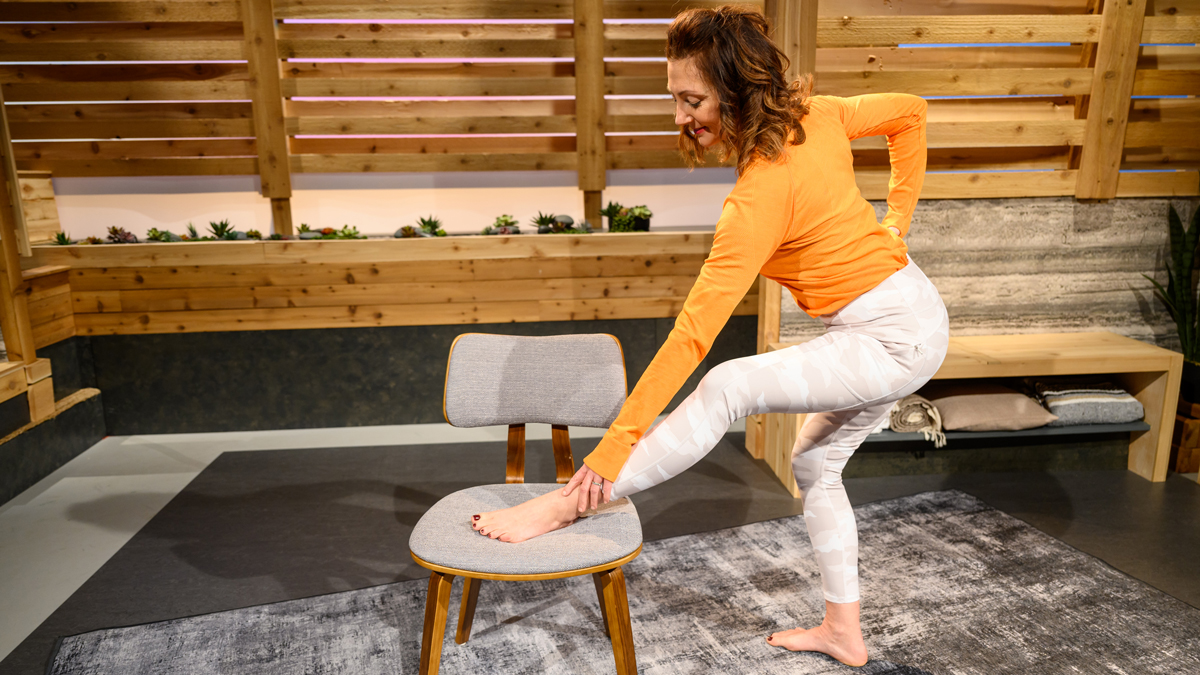Quick Fit’s Cassy Vieth discusses how to prevent falls
February 16, 2022 Leave a Comment
written by Cassy Vieth
Have you or someone you know fallen recently? Are you noticing shuffling, short-stepping and lack of confidence? Falls occur for a combination of reasons and the solution and prevention is multi-pronged.
Correcting movement to prevent falls takes time and patience. However, with consistency, improvements will come much faster than you think. When you address the issues outlined below with gentle, targeted exercise routines like those in Quick Fit With Cassy, you’ll be stepping out with confidence.
Problems that can lead to falls
First, let’s look at some of the reasons for falls. People of all ages trip and fall, but younger people usually use their reflexes to catch themselves before they hit the ground.
Shuffling
Not picking up your feet sufficiently while you walk or climb steps is very common in all ages. Instead of lifting the leg and placing the foot to move forward and using the back leg to propel, there is more of a sliding of the foot along the ground with a forward lean of the torso for momentum. Sometimes this method of ambulation is a habit but weakened hip and ankle flexors can be the culprits. Short-stepping is a close relative to the shuffle.
Short-stepping
Short stepping is brought on by fear — fear of falling during the time it takes to lift and place the foot. This fear is directly proportional to the weakness in the individual legs. In other words, neither leg is strong enough to support the body’s weight for even the briefest of times. This weakness in the individual leg is usually accompanied by a loss of balance.
Loss of balance
As mentioned above, losing balance for even the briefest of times is a contributor to falls that needs to be addressed. This sense of balance is referred to as equilibrioception. It’s the ability to keep your center of gravity above your base of support. Past injuries can contribute to this loss of neuromuscular control. This sense of balance is different but closely related to being “out of balance.”
Out of balance
In this case, I’m referring to the proper ratio of muscle activations and strength on opposite sides of the body. For example, your right leg or hip may be stronger than your left leg or hip. This uneven strength will be reflected in your sense of balance because your body is unbalanced.
Loss of sensitivity
Finally, I’d like to address the foot. In our age of running shoes, orthotics and corrective footwear, our sense receptors have lost touch with the ground. Our feet are no longer sufficiently stimulated — they’ve become stiff, numb, weak and painful.
Solutions to prevent falls
Reflexes
Now, let’s look at how we can begin turning this train around. First of all, reflexes. Your reflexes can be stimulated with gentle exercises of both the slow and fast twitch muscles. I call them my anti-trip exercises. In these, we do many quick points and flexes with the foot and ankle to strengthen the muscles responsible for lifting the front of the foot above the ground. Quick movements of the hip flexors and glutes are found in many other Quick Fit routines for strength and coordination.
Get ups
Leg weakness can be improved even from a seated position. Getting up from a seat effectively and lowering oneself down slowly — without falling into the seat — along with holds are designed to condition the muscles and retrain people to use the large muscles of their legs instead of their hands to get up and sit down.
Singles
Next, creatively focusing on ways to strengthen the legs individually is important for long, confident strides, climbing stairs and maintaining balance. In this case the chair is an excellent tool even for the very de-conditioned person who needs to begin from a point of safety. Using the chair, seated half on, half off to get into a lunge position is one of the moves we use to strengthen legs individually, along with the outer hip and more.
Set them free!
In all the Quick Fit classes, we exercise without shoes. Muscle wasting is painful. This can be brought about from immobility, and shoes limit mobility of the toes and ankles. Setting the feet free allows blood flow right down into the toes. The toes get unstuck and the muscles are once again allowed to do what they were designed to do. The sense receptors come into contact with the floor allowing proper communication with the brain about ground conditions. Fully mobile ankles and toes allow for greater mobility up the entire kinetic chain. Begin with five minutes a day without shoes until your feet are stronger.
Our culture of sitting and easy living has wasted away the muscles of our hips, glutes and hamstrings and hindered our reflexes. This wasting, or atrophy, and tightening of muscle leads to imbalances, weaknesses and ultimately trips and falls. But this doesn’t have to be your aging story.
Gentle, daily movement, such as Quick Fit With Cassy routines, is an effective, proactive way to prevent and reverse the negative effects of aging. Full-body routines work the body as a functional unit because this is how we live and move. And because our problems are usually multi-pronged, the routines take on an integrated approach. But don’t overthink it! Join me at pbswisconsin.org/quick-fit-with-cassy and on YouTube and Facebook and you’ll be sure to address all aspects of fitness to keep you living better, longer, because life is movement!
 Passport
Passport





